Medieval Pottage Stew
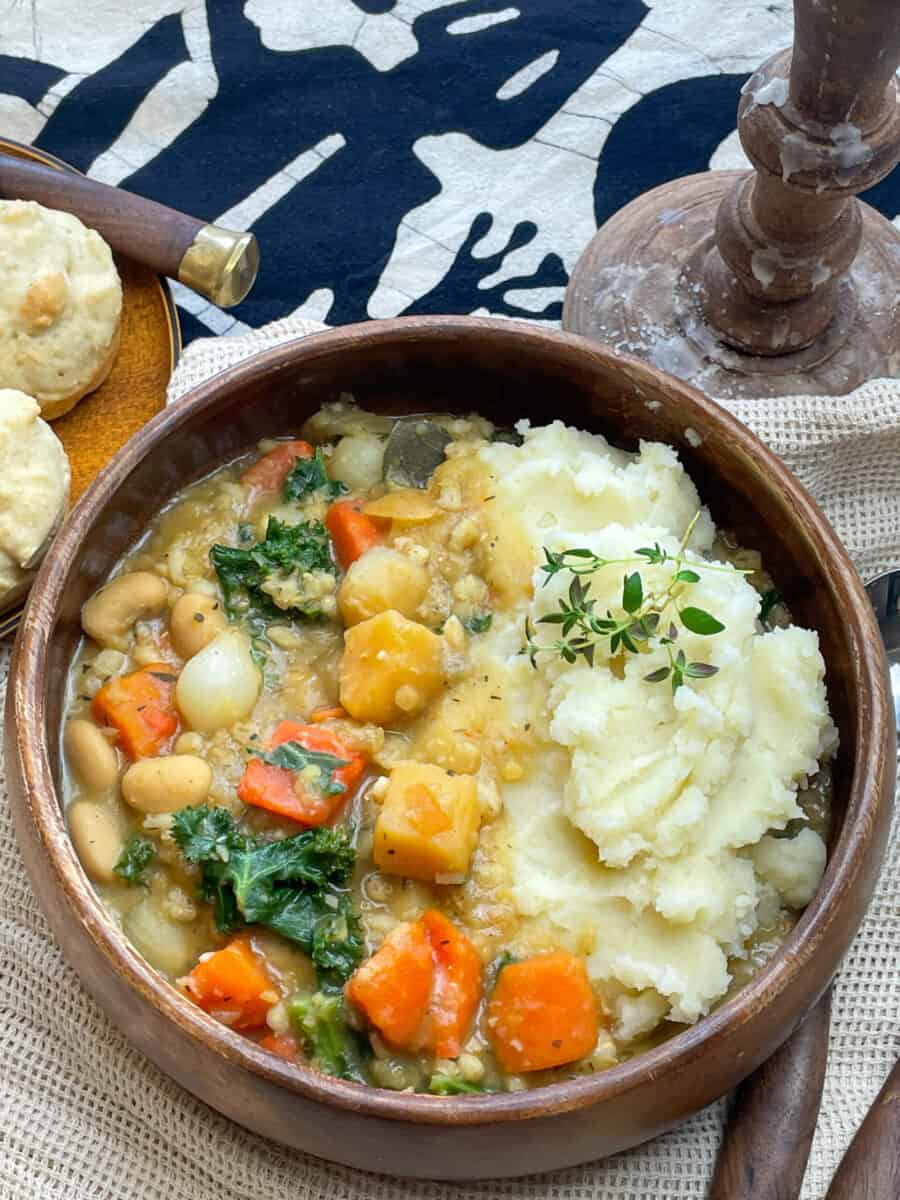
Get ready to time travel with your taste buds – this Medieval Pottage Stew is about to transport you straight back to the hearty kitchens of medieval Britain!
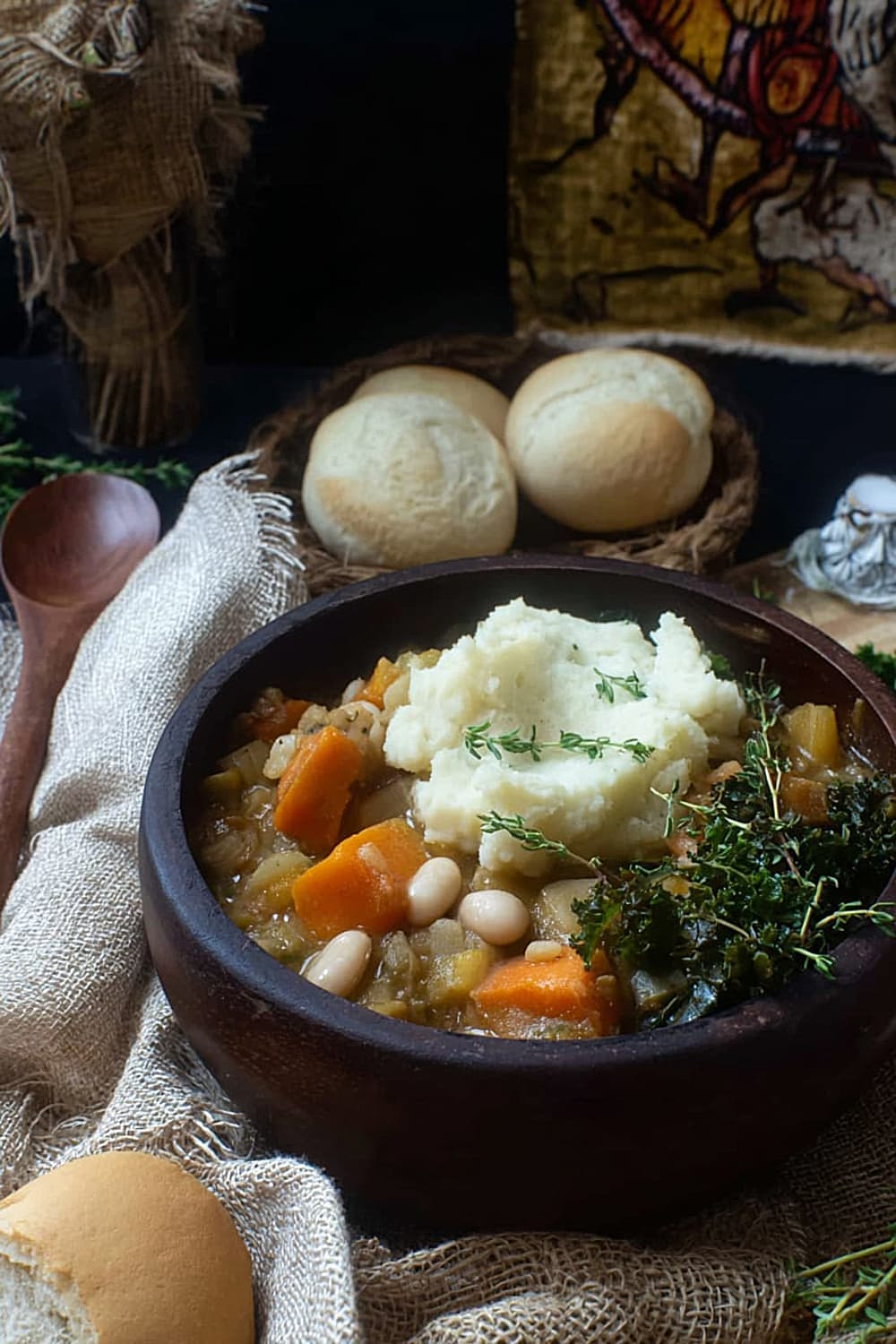
Picture this: a bubbling cauldron filled with the most soul-warming combination of tender root vegetables, earthy barley, and protein-packed lentils that’ll make your kitchen smell like pure comfort.

This isn’t just any ordinary stew – it’s a celebration of peasant ingenuity that turns simple, humble ingredients into something absolutely magical.
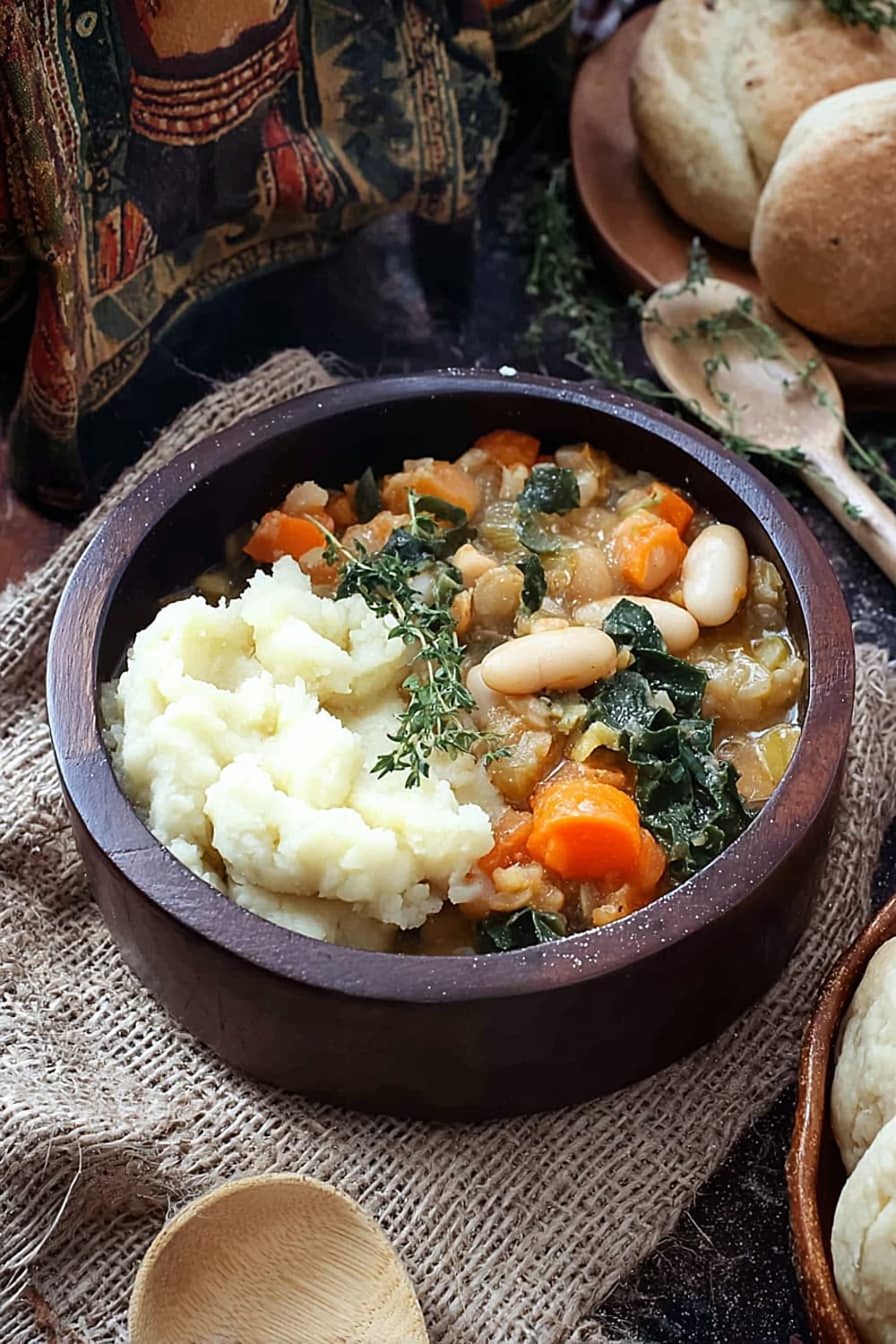
Every spoonful delivers layers of rustic flavors, from the nutty pearl barley to the creamy butter beans, all swimming in a rich, herb-infused broth that tastes like it’s been simmering for centuries.
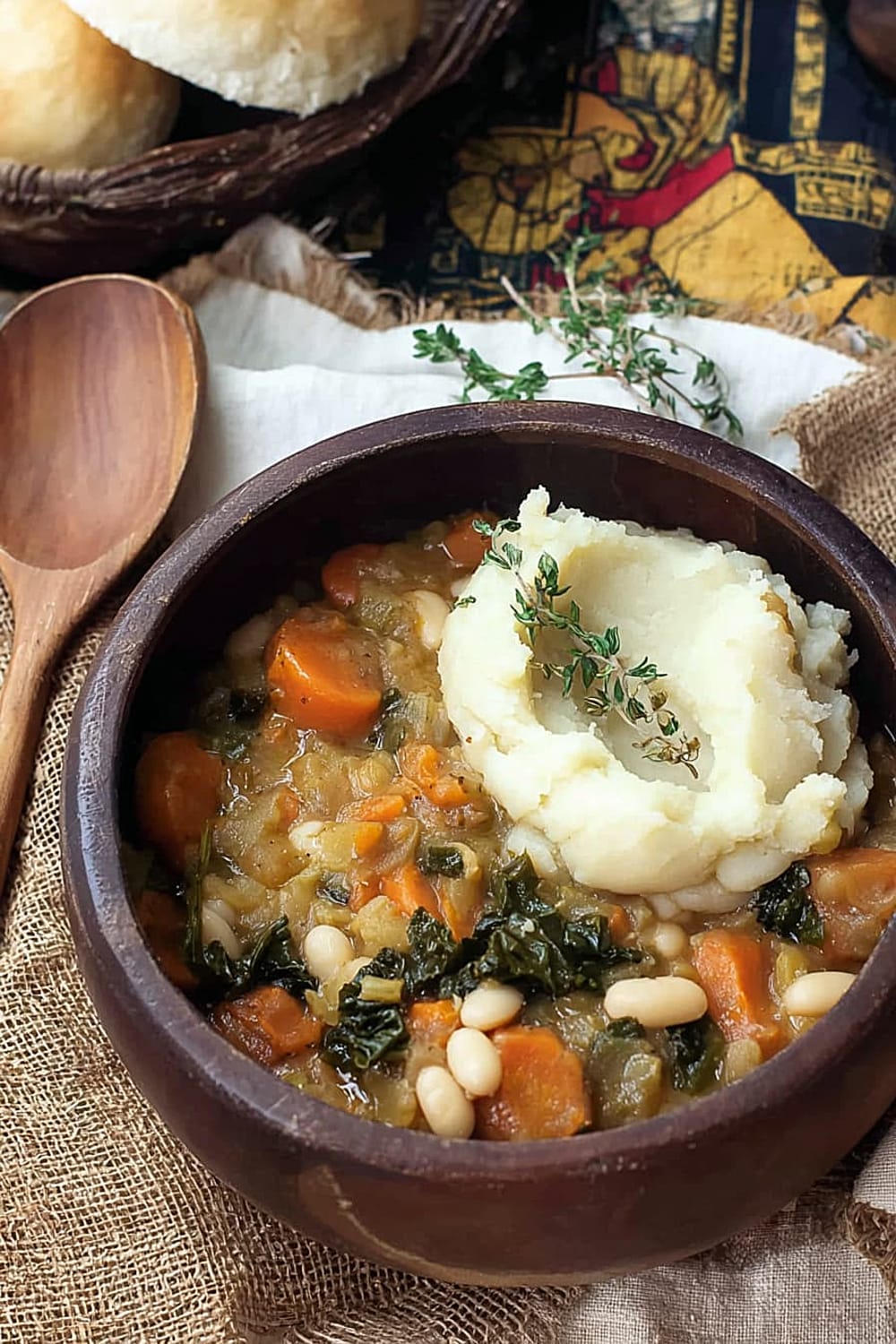
The best part about this ancient recipe is how it transforms whatever vegetables you have on hand into a thick, satisfying meal that’ll stick to your ribs and warm you from the inside out.
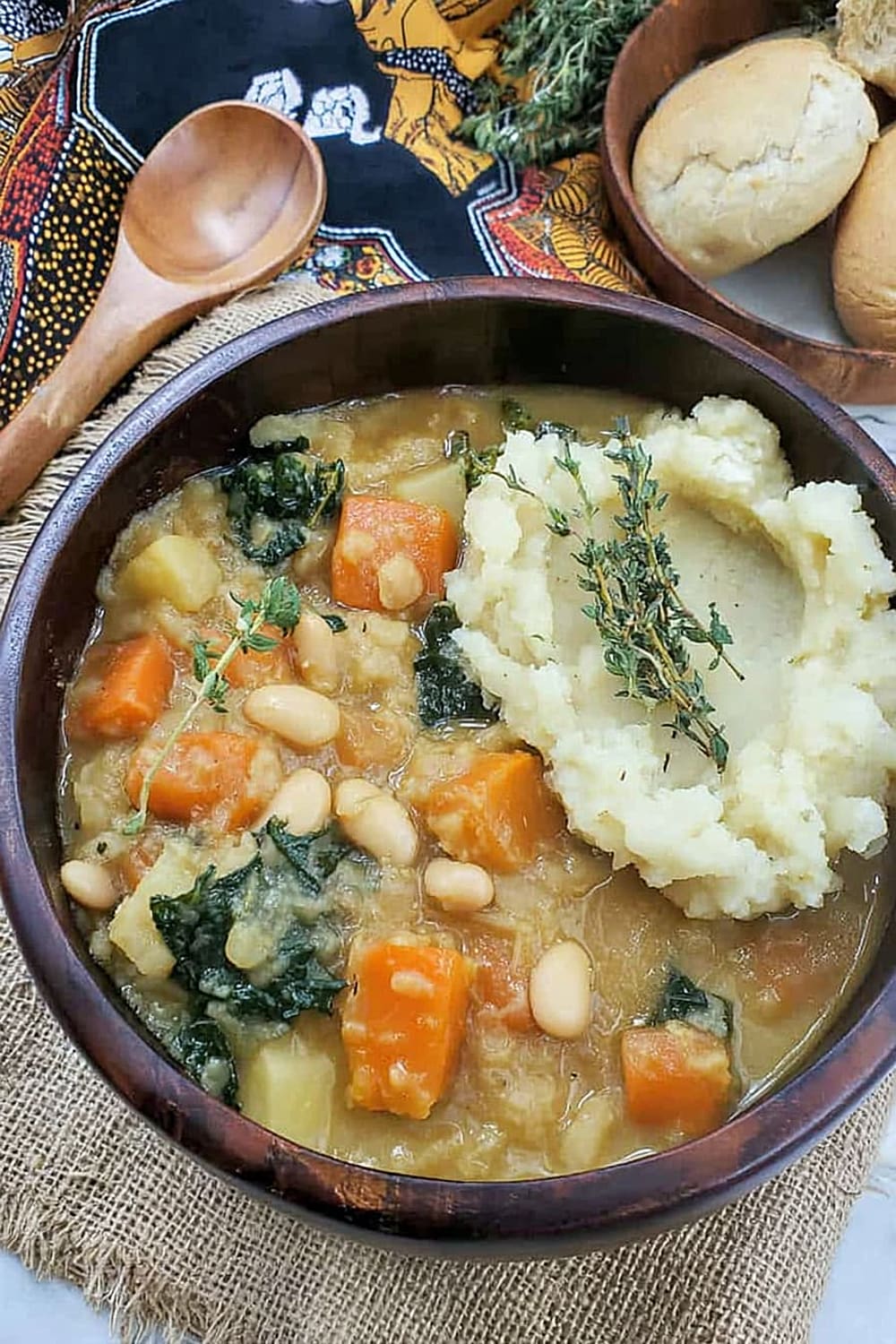
Fair warning: making this medieval masterpiece might just turn you into the most popular person at potlucks – don’t say I didn’t warn you when everyone starts begging for the recipe!
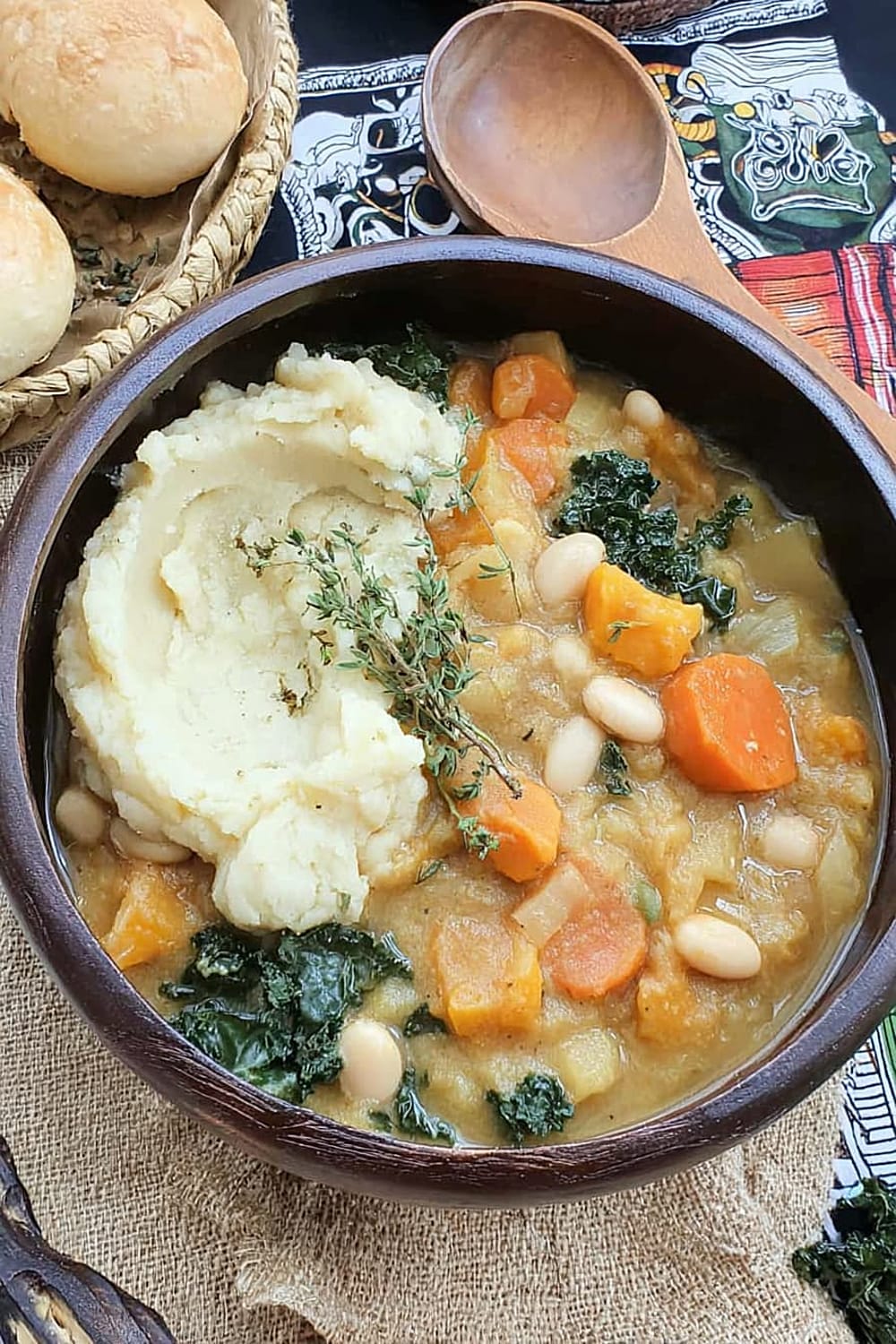
Ingredients
For the vegetable base
- 9 cups mixed vegetables (carrots, turnip, leeks, cabbage, onions, garlic, chopped into chunks)
- 2 cups fresh kale (or cabbage, roughly chopped)
For the grain and protein foundation
- ½ cup pearl barley
- ½ cup red split lentils (washed and drained)
- 1 can butter beans (400g/14 oz, drained)
- 3 tablespoons pinhead oatmeal (or rolled oats)
For the flavorful broth
- 7 cups vegetable stock (6¾ cups/3.4 UK pints/1.7 US quarts)
- 2 bay leaves
- 1 tablespoon dried mixed herbs (or fresh thyme, rosemary, sage, and parsley)
- 1 teaspoon yeast extract (or prepared mustard)
- 3 tablespoons vegan gravy powder (optional, for extra richness)
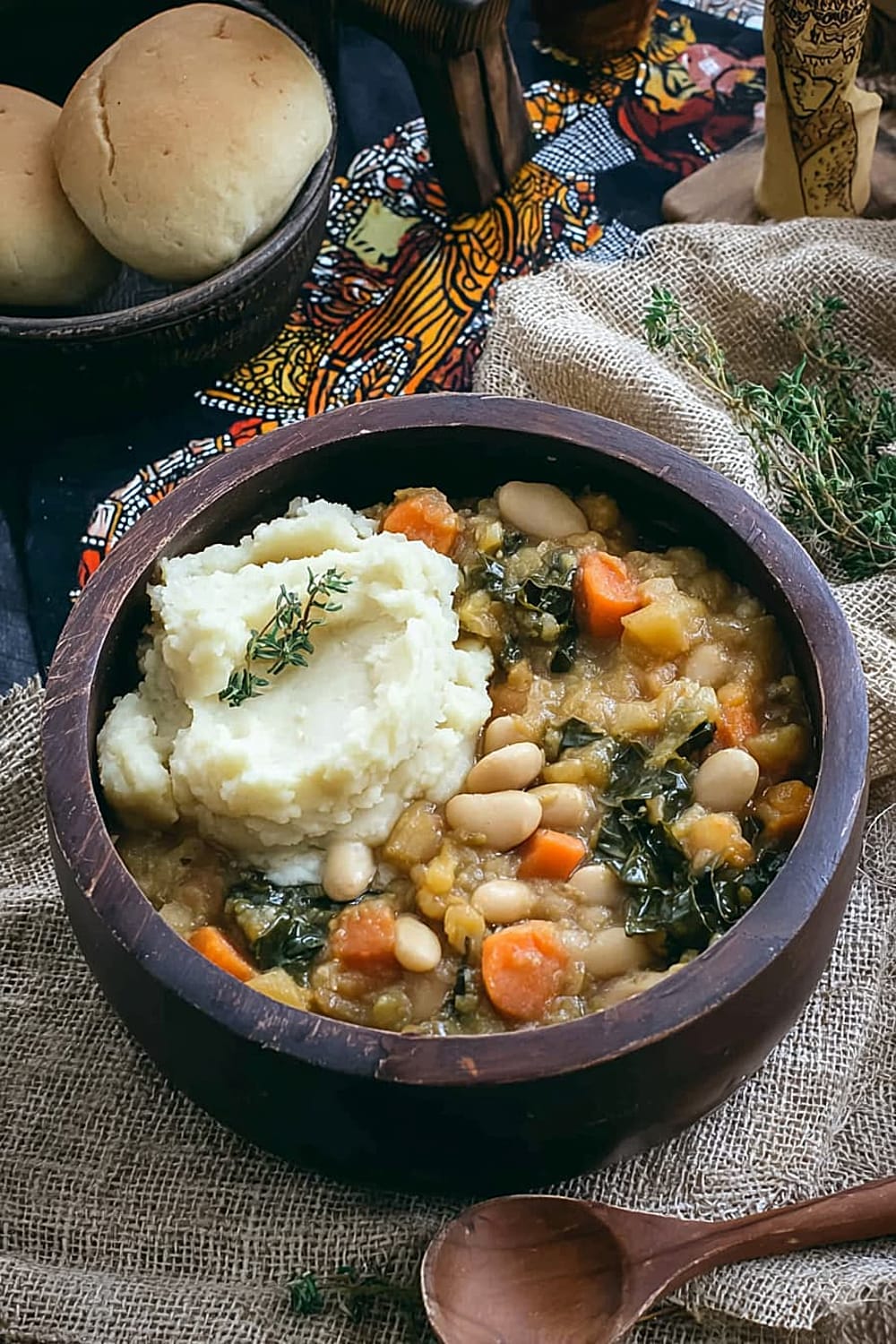
Instructions
Prepare the foundation
- 1 Heat your large stockpot or heavy-bottomed saucepan over medium heat and add all the chopped root vegetables (carrots, turnip, onions, garlic, and leeks). Sauté for 5-7 minutes until the onions become translucent and the vegetables start to soften slightly – this builds the flavor base that makes all the difference.
- 2 Add the pearl barley and red split lentils to the pot, stirring them through the vegetables for 1-2 minutes until they’re well coated and slightly toasted. This step enhances their nutty flavor and prevents them from clumping together during cooking.
Build the stew
- 3 Pour in the 7 cups of vegetable stock, ensuring it covers all ingredients by at least 2 inches. Add the bay leaves, dried mixed herbs, and yeast extract, stirring well to distribute the seasonings evenly throughout the liquid.
- 4 Bring the mixture to a rolling boil over high heat, then immediately reduce to low heat and cover with a tight-fitting lid. Let it simmer gently for 35-40 minutes, stirring occasionally to prevent sticking, until the barley is tender and the lentils have broken down to thicken the stew.
Finish and serve
- 5 Stir in the drained butter beans, pinhead oatmeal, and chopped kale during the last 10 minutes of cooking time. The kale should wilt down beautifully while retaining some texture, and the oatmeal will create that authentic medieval thickness.
- 6 If using vegan gravy powder, whisk it into 3 tablespoons of hot broth in a small bowl until smooth, then stir this mixture back into the pot during the final 5 minutes of cooking. Taste and adjust seasoning as needed – the stew should be thick enough to coat a spoon but still soupy.
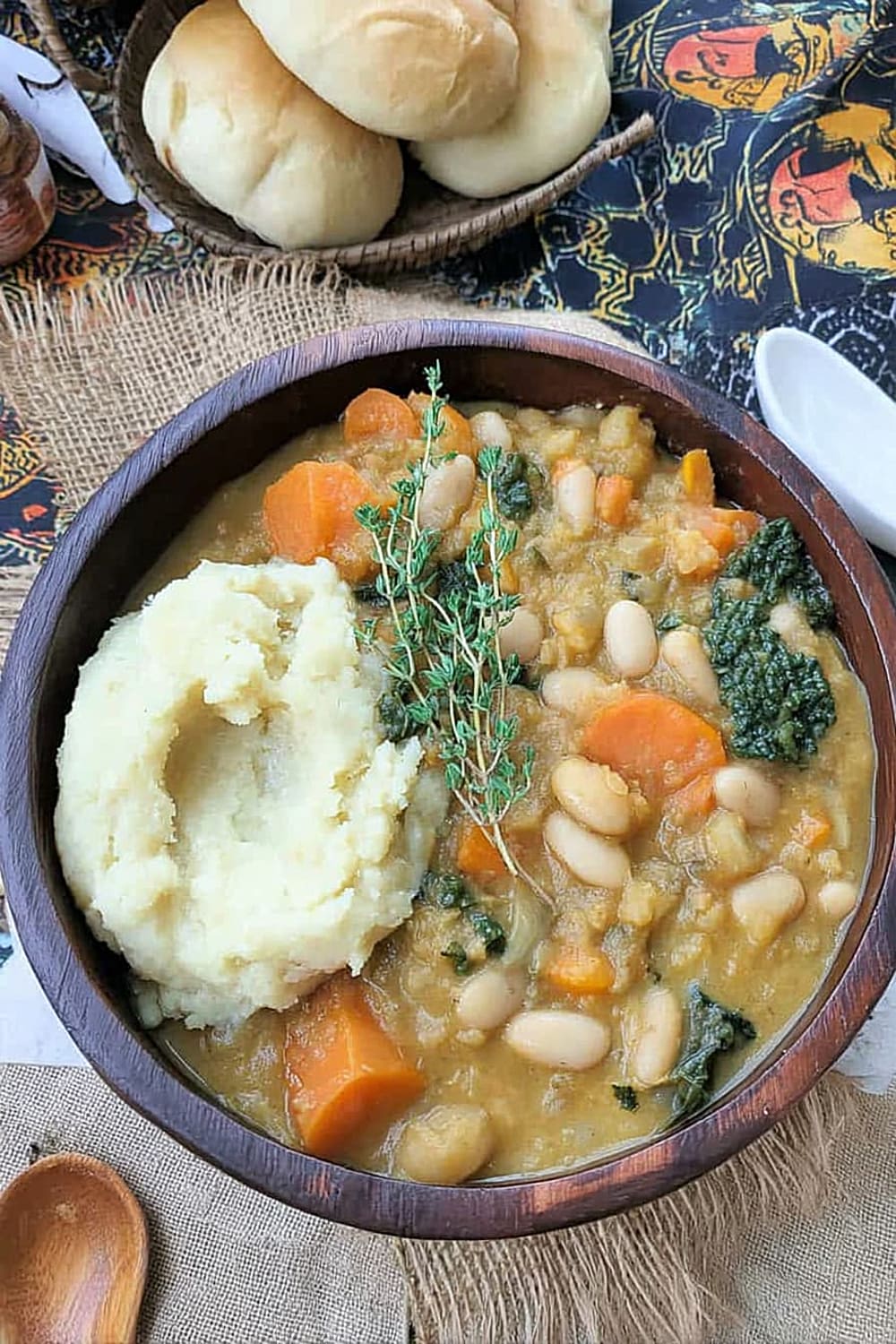
Recommended Equipment and Kitchen Tools
Essential Tools (for best results):
- Large stockpot or heavy-bottomed soup pan – A 6-8 quart capacity works perfectly for this recipe and prevents scorching on the bottom
- Wooden mixing spoon – Won’t scratch your pot and handles the thick consistency beautifully
- Sharp chef’s knife – Makes quick work of chopping all those medieval vegetables into uniform chunks
- Large cutting board – You’ll need plenty of space for prepping 9 cups of mixed vegetables
Helpful Upgrades:
- Cast iron Dutch oven – Provides superior heat retention and even cooking for that authentic slow-simmered flavor
- Immersion blender – Perfect for partially blending the stew if you prefer a smoother, more porridge-like consistency
- Fine-mesh strainer – Useful for rinsing the red split lentils thoroughly before adding to the pot
Nice-to-Have Options:
- Kitchen scale – Helps measure the 400g can of butter beans accurately if buying loose beans
- Ladle – Makes serving this hearty stew much easier and prevents spills
- Storage containers – This recipe makes excellent leftovers and freezes beautifully for meal prep

Recipe Variations and Dietary Modifications
Gluten-Free Adaptation:
- Replace pearl barley with quinoa or brown rice using a 1:1 ratio
- Ensure your vegetable stock is certified gluten-free
- Skip the vegan gravy powder or use a gluten-free alternative
- Add extra oatmeal (certified gluten-free oats) for thickness
Protein Variations:
- Replace red split lentils with green split peas or yellow split peas for authentic medieval flavoring
- Substitute butter beans with broad beans (fava beans) – fresh, frozen, or dried for historical accuracy
- Add marrowfat peas instead of lentils for a more traditional British approach
Seasonal Vegetable Swaps:
- Spring: Add fresh peas, young carrots, and tender spring onions
- Summer: Include zucchini, summer squash, and fresh herbs
- Fall: Incorporate parsnips, rutabaga, and winter squash
- Winter: Use stored root vegetables like potatoes, celeriac, and preserved cabbage
Flavor Variations:
- Herbed version: Double the fresh herbs and add fresh parsley and chives at the end
- Spiced version: Add a pinch of medieval spices like ground coriander or fennel seeds
- Smoky version: Include a small amount of smoked paprika or liquid smoke for depth
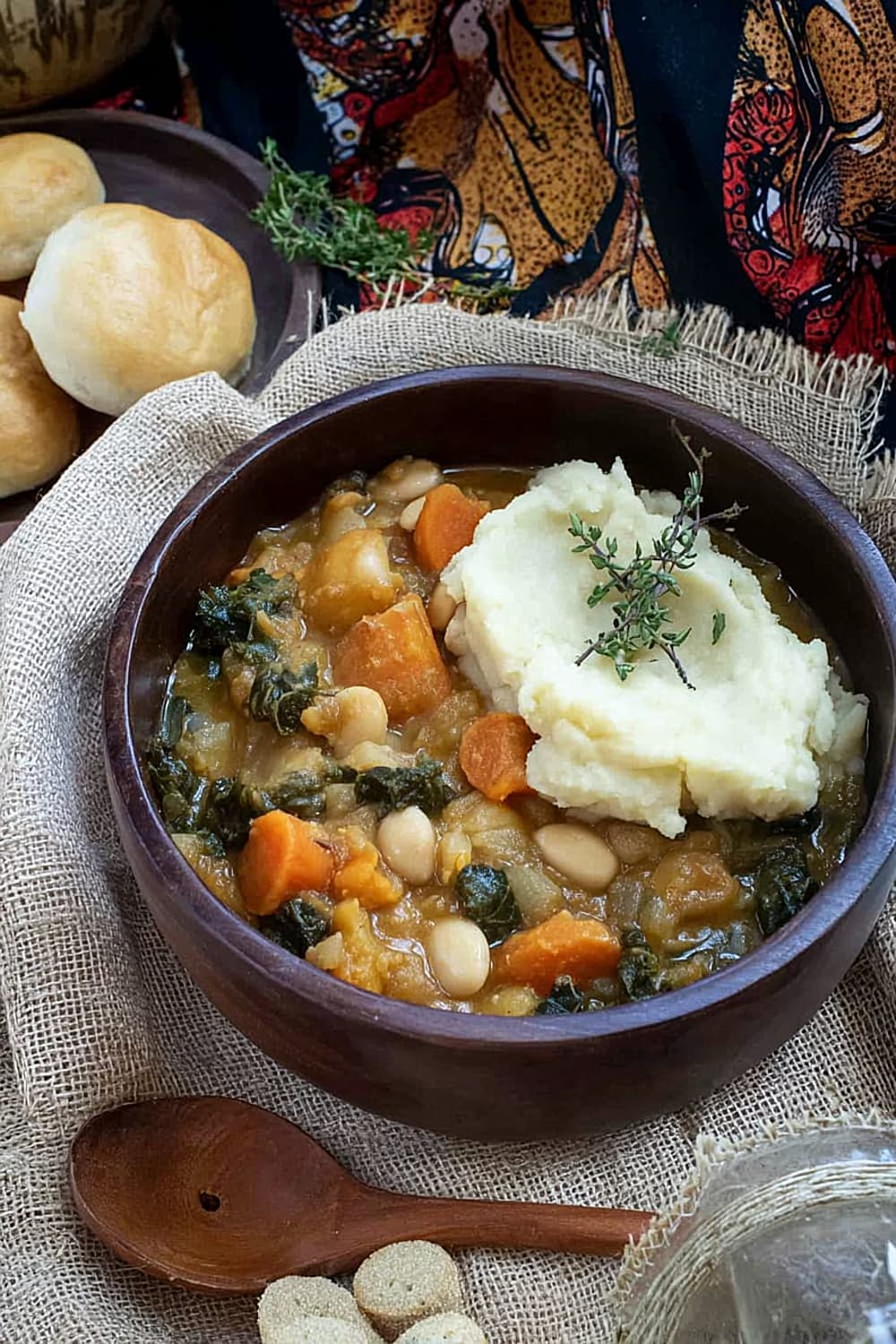
Nutritional Information and Health Benefits
Key Nutritional Highlights:
This medieval-inspired stew delivers approximately 349 calories per serving while packing an impressive nutritional punch. Each bowl provides a complete protein profile from the combination of lentils and beans, plus complex carbohydrates from the pearl barley and oats that provide sustained energy. The diverse vegetable medley contributes significant fiber content – roughly 12-15 grams per serving – supporting digestive health and blood sugar stability.
Health Benefits of Main Ingredients:
The pearl barley provides beta-glucan fiber, which helps lower cholesterol levels and supports heart health. Red split lentils are powerhouses of plant-based protein, folate, and iron, making this stew particularly beneficial for vegetarians and vegans. The mixed root vegetables deliver a rainbow of antioxidants, including beta-carotene from carrots and vitamin C from cabbage and kale. Kale specifically contributes vitamin K for bone health and lutein for eye health.
Dietary Considerations:
This recipe is naturally vegan, dairy-free, and egg-free, making it suitable for most plant-based diets. The high fiber content makes it very filling, supporting weight management goals. The combination of complex carbohydrates and plant proteins provides steady blood sugar levels, making it diabetes-friendly when portion-controlled. Contains gluten from barley, so modifications needed for celiac diets.
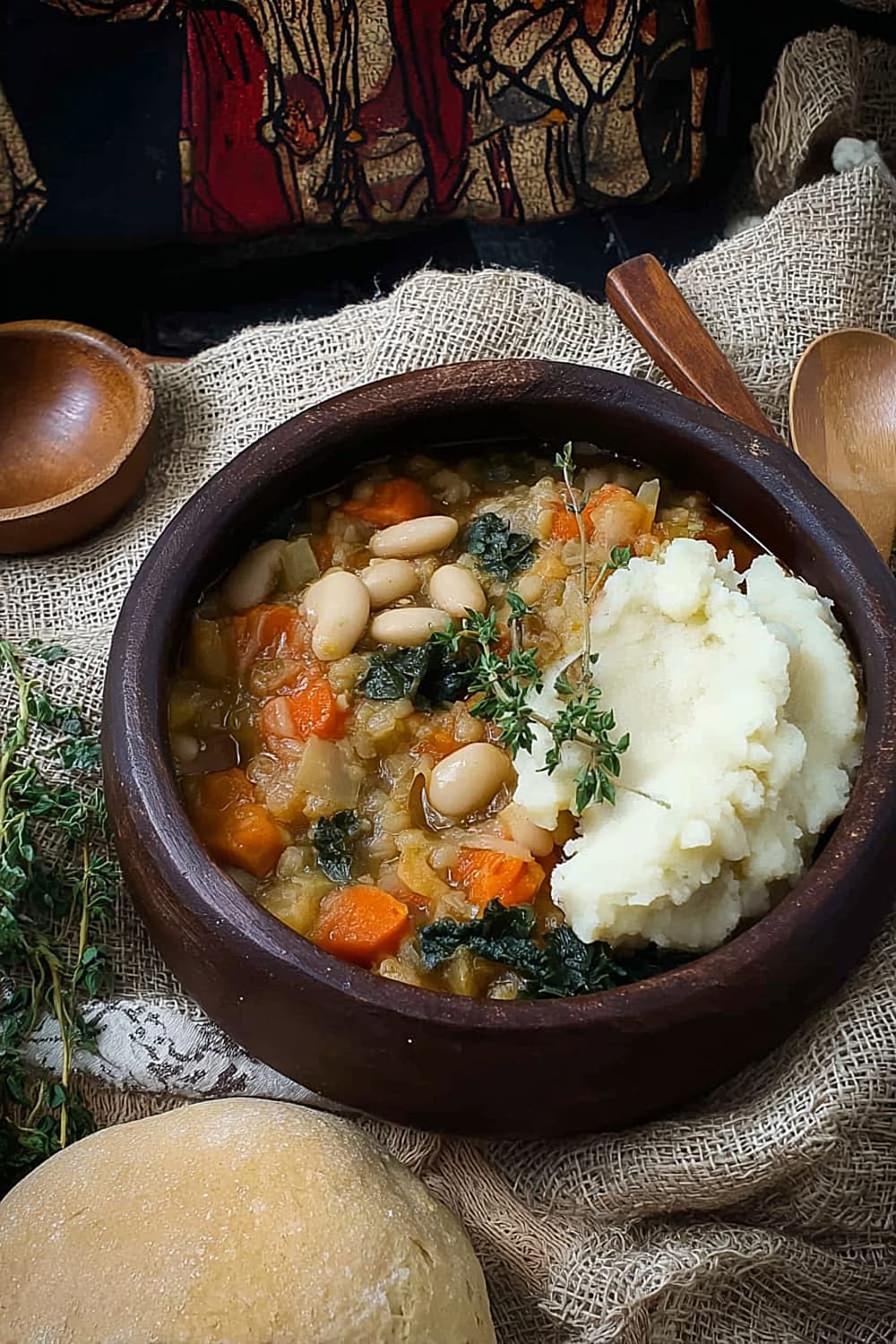
Smart Swaps and Ingredient Substitutions
Common Substitutions:
- Pearl barley → Hulled barley (cook 15 minutes longer) or farro (same cooking time)
- Red split lentils → Yellow split peas or green split peas (may need 10 extra minutes cooking)
- Butter beans → Cannellini beans, navy beans, or broad beans in equal amounts
- Pinhead oatmeal → Steel-cut oats or rolled oats (add rolled oats in final 5 minutes only)
Budget-Friendly Swaps:
- Fresh herbs → Dried herbs using 1/3 the amount called for
- Organic vegetables → Conventional vegetables work perfectly fine
- Canned beans → Dried beans (soak overnight and cook separately before adding)
- Vegetable stock → Homemade stock from vegetable scraps or bouillon cubes
Pantry Emergency Substitutions:
- Yeast extract → Soy sauce, tamari, or prepared mustard for umami depth
- Vegan gravy powder → Extra oatmeal plus nutritional yeast for thickness and flavor
- Fresh kale → Frozen spinach, cabbage, or collard greens
- Mixed vegetables → Whatever root vegetables you have on hand
Pro Tips for Substitutions:
- When using dried beans, cook them separately until tender before adding to prevent uneven cooking
- Frozen vegetables can replace fresh – add them in the last 15 minutes to prevent mushiness
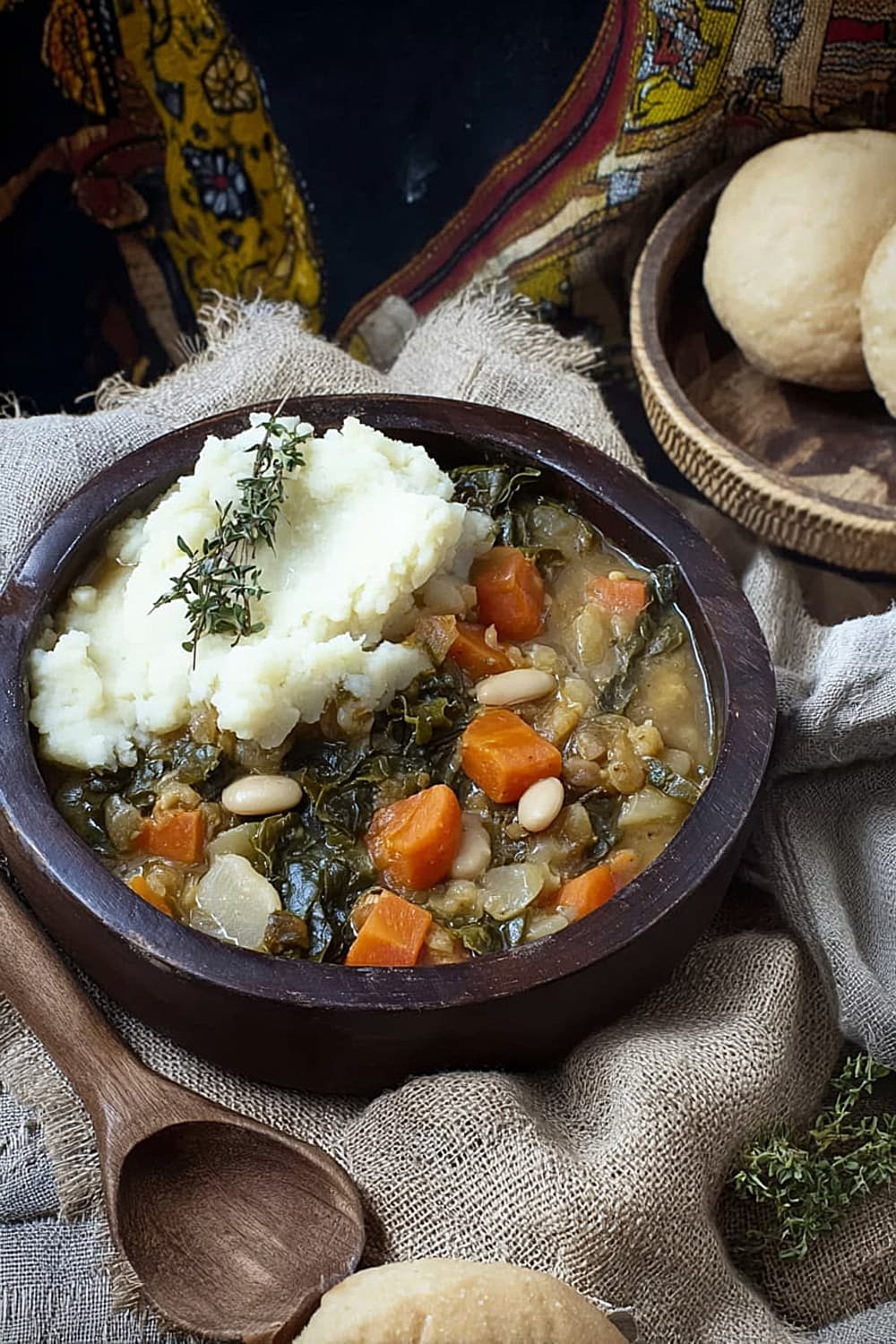
Make It Diabetes-Friendly
Carb Reduction Strategies:
- Reduce pearl barley to ¼ cup instead of ½ cup, saving approximately 25g carbohydrates per serving
- Increase non-starchy vegetables like kale, cabbage, and turnips while reducing higher-carb root vegetables
- Add extra protein through additional lentils or beans to improve satiety and blood sugar response
- Skip the oatmeal thickener or replace with ground flaxseed for fiber without the carb impact
Portion & Timing Tips:
- Serve smaller portions (1 cup instead of 1½ cups) paired with a large green salad
- Total carbs per modified serving: Approximately 25-30g instead of the original 45g
- Eat with protein-rich sides like hemp seeds or nutritional yeast sprinkled on top
- Time consumption with physical activity when possible to improve glucose uptake
Blood Sugar Friendly Additions:
- Add vinegar (apple cider or white wine) in the last few minutes for blood sugar blunting effects
- Include cinnamon or turmeric which may help with glucose metabolism
- Serve with healthy fats like avocado slices or olive oil drizzle to slow carbohydrate absorption
Total Carb Reduction: Modified version contains approximately 40% fewer carbohydrates while maintaining the hearty, satisfying character of the original medieval recipe.

Perfect Pairing Suggestions
Beverage Pairings:
This rustic stew pairs beautifully with robust red wines like Côtes du Rhône or Chianti, whose earthy tannins complement the hearty vegetables and beans. For beer lovers, try a malty brown ale or English bitter that echoes the medieval British origins. Non-alcoholic options include herbal teas like rosemary or thyme tea, sparkling water with lemon, or warm spiced cider for cold weather dining.
Side Dish Recommendations:
Serve alongside crusty sourdough bread or medieval-style oat cakes for authentic period dining. Roasted root vegetables with herbs make an excellent textural contrast, while braised red cabbage adds tangy brightness. For modern touches, try garlic-rubbed toast points or herb-crusted dinner rolls that can soak up the rich broth.
Complete Meal Ideas:
Start with simple green salad dressed with apple cider vinegar and olive oil to prepare the palate. Follow the stew with baked apples stuffed with oats and cinnamon for a period-appropriate dessert. For entertaining, create a medieval feast with roasted vegetables, herb-crusted bread, and seasonal fruit compote.
Occasion Suggestions:
Perfect for cold weather gatherings, harvest celebrations, or historical-themed dinners. This stew shines at casual family meals, potluck dinners, and meal prep sessions. The make-ahead friendly nature makes it ideal for busy weeknight dinners or weekend batch cooking sessions.
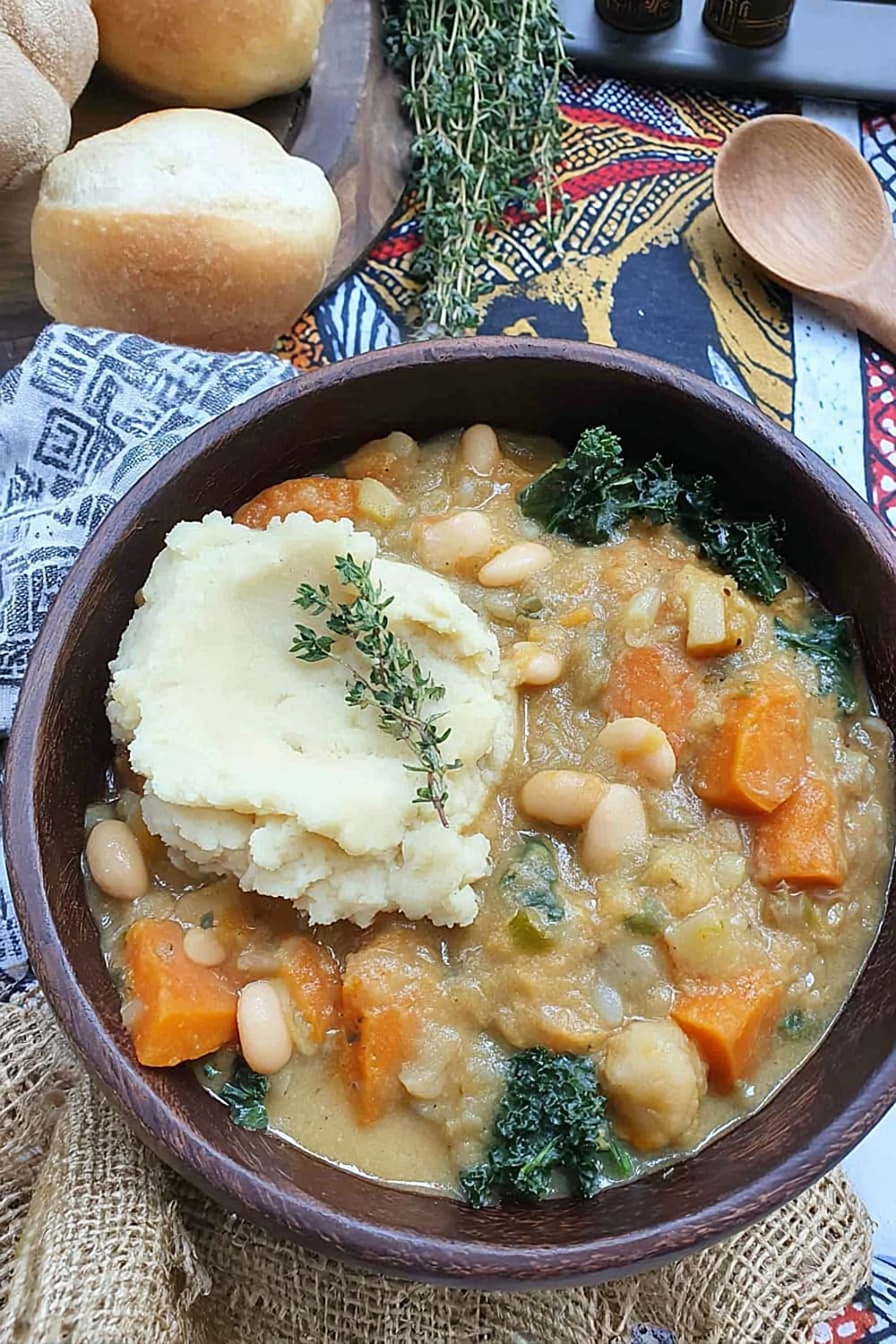
Pro Tips and Troubleshooting
Professional Cooking Tips:
Always sauté the vegetables first to develop deeper flavors before adding liquid – this extra step makes a tremendous difference in the final taste. Layer your seasonings by adding herbs at different stages: hardy herbs like bay leaves early, and delicate herbs like parsley at the very end. Taste and adjust seasoning multiple times during cooking, as the flavors concentrate and change as the liquid reduces.
Common Mistakes and Solutions:
If your stew turns out too thin, simmer uncovered for the last 10-15 minutes to reduce liquid, or whisk in additional oatmeal. For too thick consistency, gradually add hot stock or water until you reach desired consistency. Mushy vegetables result from overcooking – add delicate vegetables like kale in the final minutes only. Bland flavor usually means insufficient seasoning or skipping the initial vegetable sauté step.
Storage and Reheating:
This stew improves with age and keeps refrigerated for up to 5 days or frozen for 3 months. Reheat gently on low heat, adding liquid as needed since grains continue absorbing moisture during storage. Freeze in portions for easy weeknight meals, but note that the texture of vegetables may soften slightly after freezing.
Make-Ahead Strategies:
Prep vegetables up to 2 days ahead and store covered in the refrigerator. The complete stew can be made 1-2 days in advance and actually tastes better after the flavors meld. For meal prep, portion into individual containers and add fresh herbs when reheating for optimal flavor and presentation.
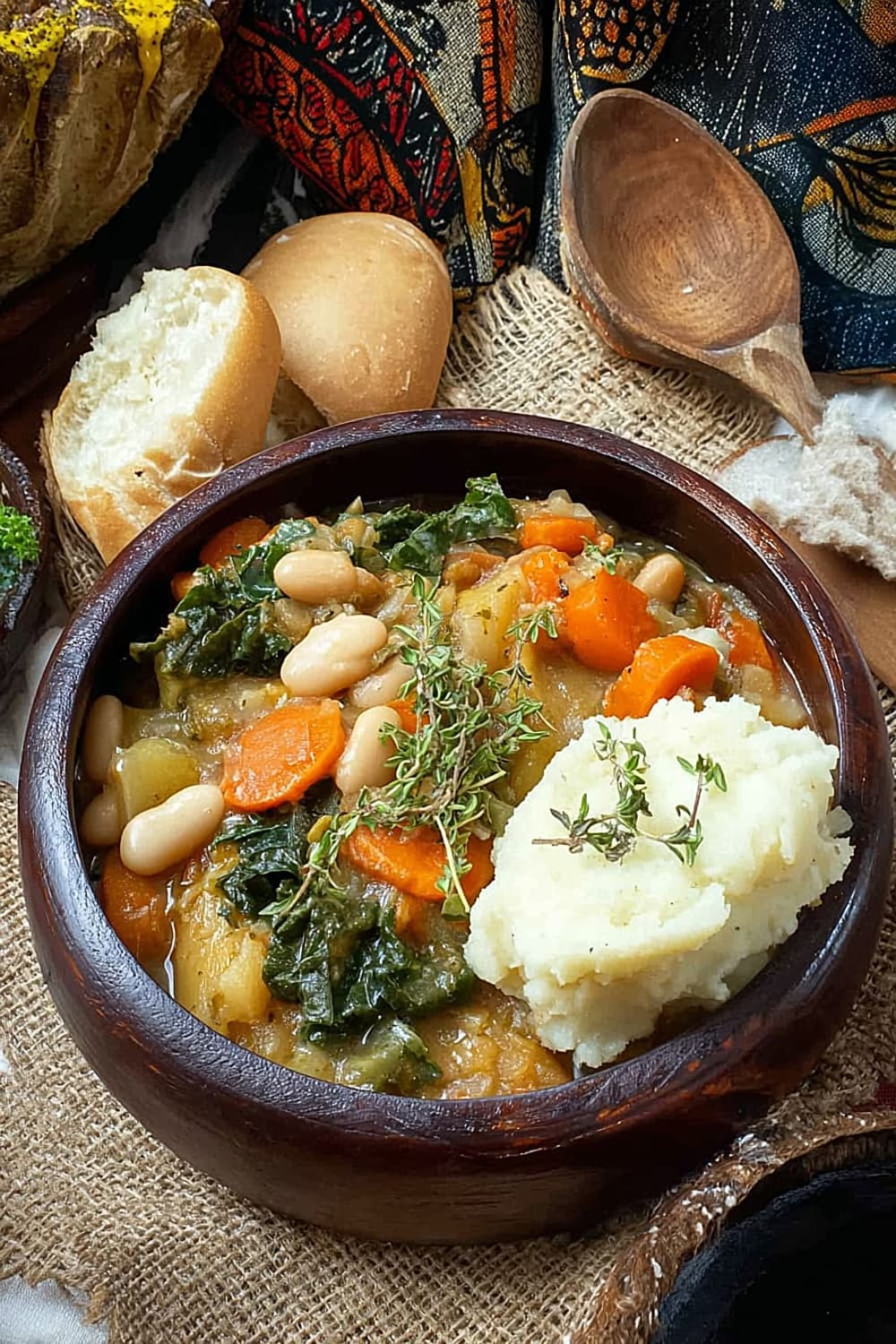
This Medieval Pottage Stew proves that the best recipes are often the simplest ones, transforming humble ingredients into something truly extraordinary. Whether you’re feeding a hungry family on a cold winter night or impressing guests with your historical cooking knowledge, this hearty stew delivers comfort, nutrition, and authentic medieval flavors in every satisfying spoonful. The beauty of this recipe lies in its adaptability – just like medieval cooks who used whatever ingredients were available, you can customize this stew to your preferences and dietary needs while maintaining its rustic, soul-warming character.